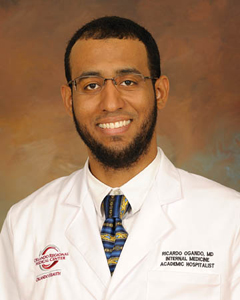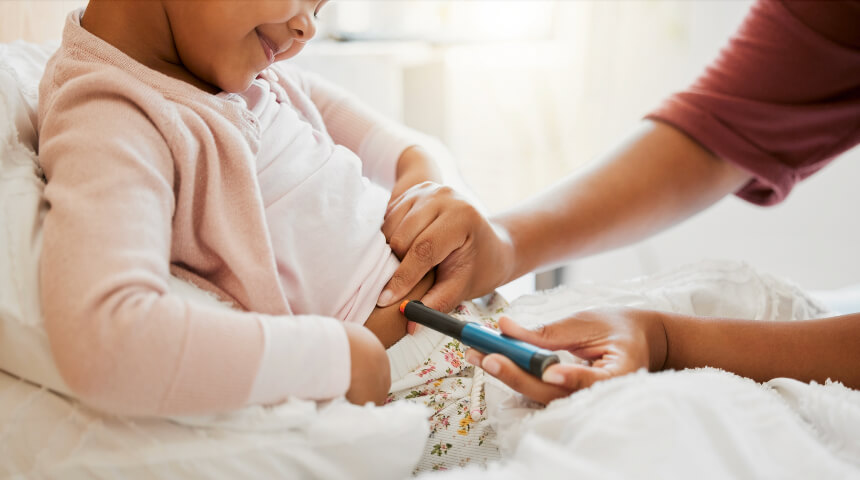An estimated 6.7 million patients will suffer from non-healing advanced wounds this year, according to Wound Care Awareness. Seniors, diabetic patients, cancer survivors, veterans, cardiac and surgical patients, are among those who will be affected by a non-healing wound.
At South Seminole Hospital Wound Care Center, we make treating patients with chronic wounds our specialty. We work with patients to identify the underlying barrier to healing and come up with a solution that helps them.
Treating Chronic Wounds at South Seminole Hospital Wound Care Center
A chronic wound is any wound that has been open for more than 30 days without substantial improvement. Once it gets to this point, we consider it an ulcer and the odds of healing are lower than 36-69% unless intervention takes place.
When a patient comes in with any type of wound, our first step is to understand the reason it hasn’t yet healed — whether it’s lack of blood flow, pressure or diabetes, etc. We first examine the wound or ulcer and determine the nature of it. Some of the most common are diabetic foot ulcers; venous ulcers, which are common in patients with poor circulation who have a history of working on their feet or getting varicose veins; arterial ulcers, which form in the lower limbs and are common in patients with vascular disease; and pressure ulcers (also known as bed sores), which occur in patients who are immobile, wheelchair-bound or bedbound. These types of ulcers are typically a sign of poor overall health or poor care. We also treat patients with surgical wounds, traumatic wounds and skin infections caused by bacteria, among several other conditions.
In patients who have a chronic condition like diabetes, it’s critical to treat the wound as soon as possible because the longer the wound is open the more chances for complications. If the wound is in a lower extremity, for example, a patient could end up with an amputation or an infection that can spread to other parts of the body.
When we see patients in our office, they often ask “how long is this going to take to heal?” However, ulcers are chronic, so this will take some time and will depend on how well we can overcome the underlying issues that cause the slow healing. Patients also worry about infection and often ask about MRSA, an infection caused by staphylococcus bacteria that is frequently covered in the news and associated to poor outcomes. We always listen to patients, hear their concerns and do our best to address them.
At the Wound Care Center, our approach is multidisciplinary. We bring a lot of different specialties on board to help wound patients, besides primary care provider, we include vascular surgeon, a cardiovascular provider who can do interventions, podiatry, endocrinology to help with diabetic patients, depending on the case. We also work with general and plastic surgeons, since some patients may have bed sores so large they require reconstruction.
We have access to advanced treatments to help wound patients, such as total contact cast, negative pressure devices and skin cells substitutes. Hyperbaric oxygen therapy is part of our approach to wound healing. With this noninvasive treatment, patients are placed in a hyperbaric chamber and given 100 percent oxygen to help strengthen the tissues by stimulating capillaries and tissue growth, remodeling and clearing infection, thus promoting wound healing.
Hyperbaric oxygen therapy, may not apply to everyone, but is particularly effective for patients with diabetic ulcers who have deep infections and/or poor blood flow. They benefit a lot more from this treatment in terms of avoiding amputation. Patients who have a history of radiation treatment because of a past cancer also can develop wounds or damage on their bones or tissues that require hyperbaric therapy to improve their condition, recover function in that area or treat the wound altogether. Hyperbaric treatment may be beneficial for anyone who has diabetic wounds on their lower limbs, traumatic wounds or wounds caused by poor circulation.
If the patient agrees with family members being involved in their treatment, we include them in the wound healing process and how they can help. In many cases, we need the family to participate because many patients with chronic wounds have poor health. Family members can help the patient with something as simple as transportation to their appointment or be more involved in changing the dressing for their wounds at home, and for overall emotional support as the patient heals. In this regard, a patient’s family is an important component of the care process.
It’s also crucial for patients to practice proper wound care at home. Contrary to popular belief or what you may read online, it’s best to keep a wound covered, protected and clean instead of leaving it open and letting it air dry. This is the worst thing you can do because the wound will take longer to heal.
If you have a wound and it isn’t improving, seek treatment as soon as possible and come to the Wound Care Center. The earlier you come in, the better we can treat the wound. If you have diabetes, renal disease or circulation problems, it’s critical not to delay treatment. If you do, your wound could become a chronic ulcer and you could develop complications. Many patients often aren’t aware of our Wound Care Center and will have wounds for a year, and after a few weeks in treatment, the wound is no longer there, which suggests the issue could have been addressed sooner with proper treatment.
If you have a wound, come to the center and get assessed by a doctor — no matter how minor it seems, early intervention leads to better outcomes.
Would you like to learn more about our Wound Care Center?
The Center for Wound Care can help you get your life back. Our unique multidisciplinary team of dedicated doctors and nurses treat more of these wounds than anyone else. Many patients find wounds that have resisted healing after months and even years of traditional treatment can be treated. It's all we do. In fact, for most patients, the Center for Wound Care program leaves them completely healed in just a few months.










